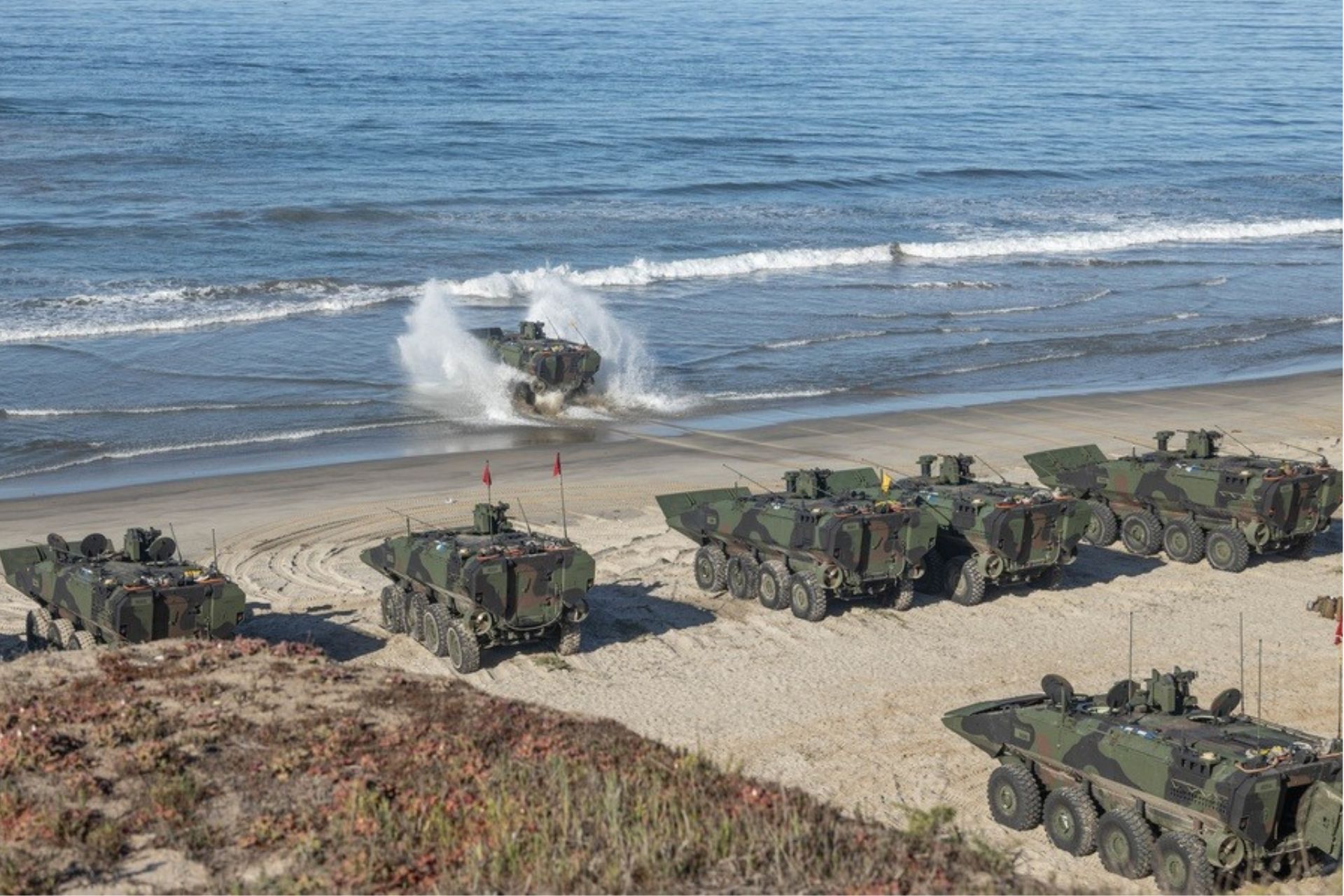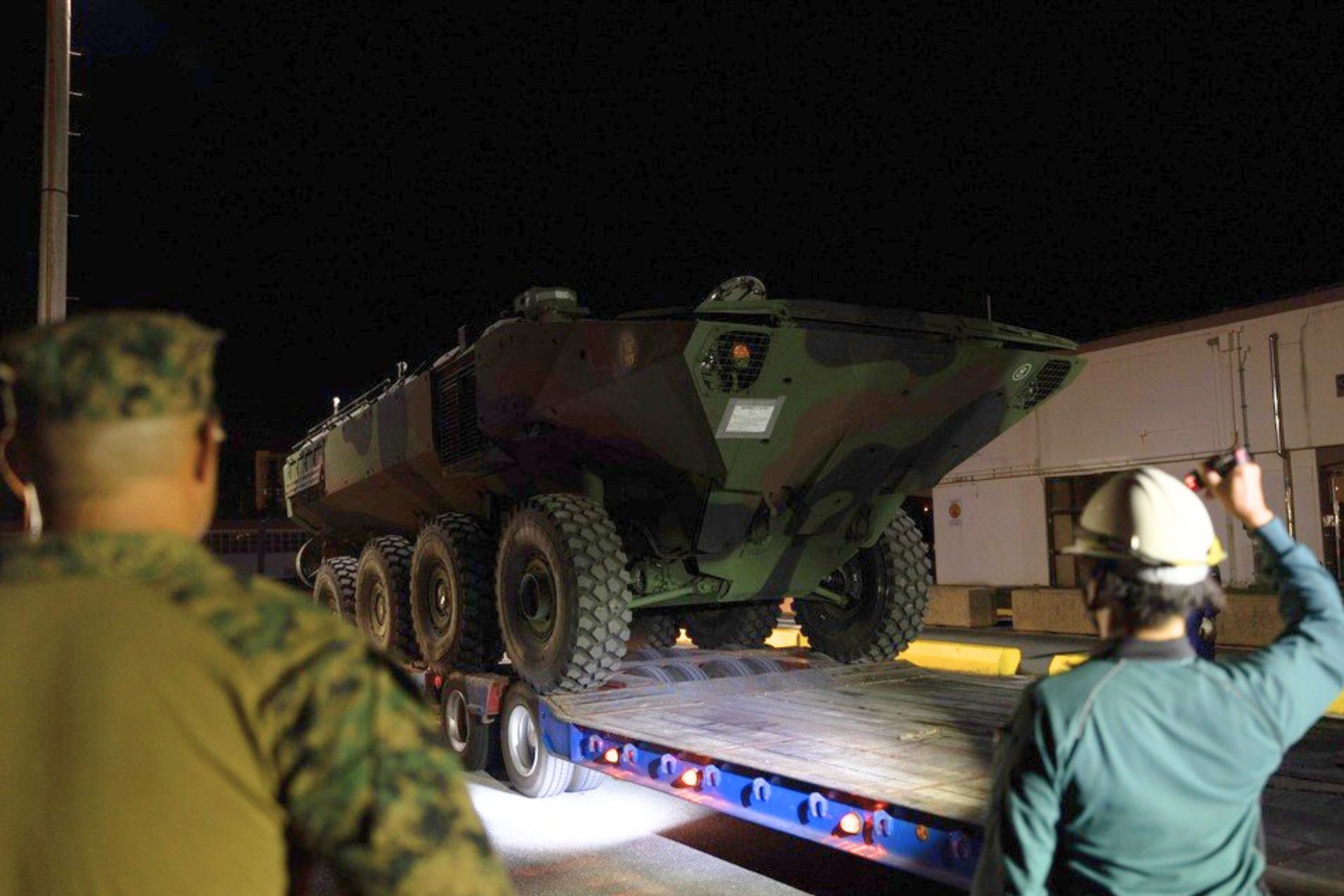Breaking News
Strategic Update of US Marines in Indo-Pacific with Arrival of New Amphibious Combat Vehicles in Japan.
The United States Marine Corps has enhanced its capabilities in the Pacific with the arrival of new Amphibious Combat Vehicles (ACVs) in Okinawa, Japan. This deployment, involving the ACV-P personnel variant, took place on June 29 at the Naha Military Port and is a critical element in the Marines' strategy to improve ground and amphibious combat readiness amid rising tensions in the Indo-Pacific region.
Follow Army Recognition on Google News at this link

Manufactured by BAE Systems, these ACVs are replacing the aging Assault Amphibious Vehicles (AAV) that have been in service since the early 1970s (Picture source: US DoD)
These vehicles, part of the modernization of the Marine Corps' assets in the Pacific theater, are aimed at bolstering preparations for potential high-intensity conflicts, particularly in scenarios that involve island-hopping operations that could arise due to increasing geopolitical tensions with China. The 4th Marine Regiment, part of the III Marine Expeditionary Force stationed at Camp Schwab, is the first recipient of these vehicles. A total of 12 ACV-Ps, which are the basic personnel carriers of the Marines' new ACV fleet, have been allocated for delivery this month, according to Tim Hough, the commanding officer and program manager of Advanced Amphibious Assault (PM AAA).
Manufactured by BAE Systems, these ACVs are replacing the aging Assault Amphibious Vehicles (AAV) that have been in service since the early 1970s. The new vehicles are expected to provide improved operational capabilities, including higher speeds on land and similar amphibious speeds to the AAVs. Notably, the ACV features a V-shaped hull designed to reduce the risk from mines and improvised explosive devices, a significant safety enhancement over the flat-bottomed AAVs.
The recent deployment of these vehicles follows their first use during training exercises with the 15th Marine Expeditionary Unit at the White Beach training area in Okinawa earlier this month. This fleet includes several mission-role variants: the ACV-C for command and control, the ACV-R for recovery, and the newly developed ACV-30, which is equipped with a 30mm Mk 44 Stretch Bushmaster cannon, marking the largest gun on a mechanized vehicle in the Corps’ inventory following the divestment of Marine M1 Abrams tanks.

U.S. Marine Corps Sgt. Jack Kanta disembarks an Amphibious Combat Vehicle at Naha Military Port, Okinawa, Japan, June 29, 2024 (Picture source: US DoD)
The arrival of the ACVs is part of a broader shift by the Marine Corps towards a more mobile and responsive force structure, suited to the unique demands of the vast maritime landscape of the Indo-Pacific. This strategy is intended to ensure readiness for rapid deployment across the region's numerous islands, enhancing the USMC's ability to conduct operations in conjunction with allies and effectively manage emerging threats.
This strategic deployment not only emphasizes the USMC's commitment to maintaining a robust presence in the Pacific but also enhances its capabilities to conduct amphibious operations, a critical element given the geographical challenges of the region.


























